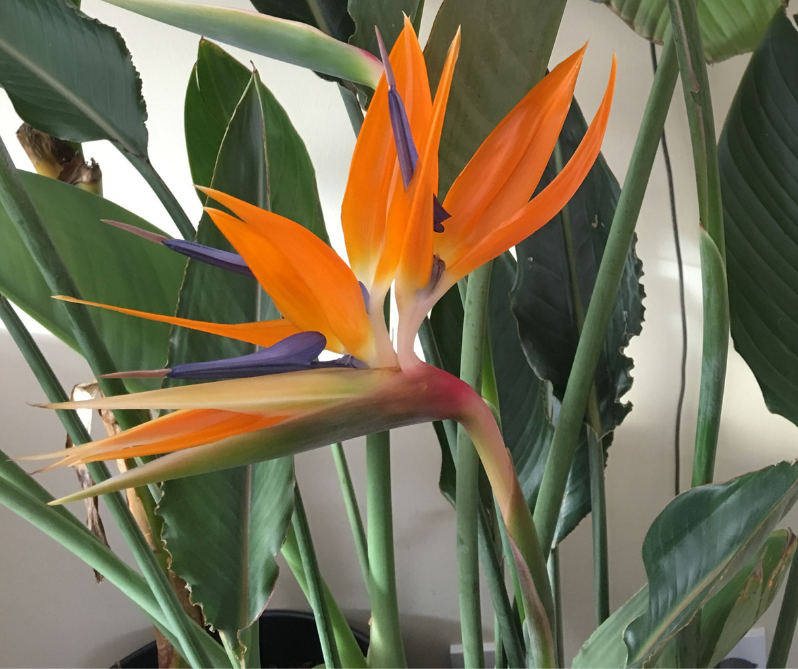
About Indoor / House Plants
SOME PEOPLE ARE SURPRISED BY OUR SUGGESTIONS
Indoor / House Plants
If you’re reading this you’re human (presumably) and if you’re human, you may have a room that you think of as warm, comfortable and light. A plant might disagree with you. It’ll probably think your room is dark, dry and not particularly comfortable. Living in a pot in a house is no place for a self respecting plant but fortunately there are a few that don’t mind. Some are just incredibly tough (Phoenix canariensis, Agave americana) but most are forest floor plants with large leaves (an adaptation to low light) such as Alocasia, Zantedeschia and Gunnera. Some people are surprised by our suggestions but with skill and space, any plant that’s adapted to low light is worth trying as a house plant. Some can get quite big but they either need a large house or office or atrium or they need to get cut back from time to time. Two commonly used ‘Indoor/House Plants’ are Kentia Palms (Howea forsteriana) and Yucca (Yucca elephantipes). Left to their own devices, Kentias can grow to over 30ft and Yuccas to over 20ft.
Behaving Differently
Bearing in mind the important understanding that, in nature, there’s no such thing as an Indoor/House Plant (or Conservatory Plant, or Pot Plant or Wall Shrub for that matter), much can be learnt by observing the behaviour of plants indoors. Some might respond to electric lights nearby (the wavelength of light used by plants is little understood), some might enjoy a spell outside from time to time, some will do better by a window, all might get bugs (see Pests and Diseases on this page), all will benefit from having their leaves dusted and all need a saucer to sit in to stop the floor getting wet.

Like most establishments, the House Plant Industry is conservative. Understandably, they stick with what they know but experience has shown us that there are huge numbers of plants worth trying and occasionally one is genuinely surprised at what works and what doesn’t. The plants we list in this category have all been tried with conditional (obviously) success. There are more possibilities than Swiss Cheese Plants, Rubber Plants, Ficus benjamina and Poinsettias.
*N.B. It’s important to remember that in nature, there’s no such thing as an indoor / house plant!
ABOUT CONSERVATORY PLANTS
When we started the business in 1990, conservatories were all the rage. Everyone wanted one or had one and everyone had been lead to believe that they were great places to grow plants in. Not entirely true. They’re hot and dry and breeding grounds for every imaginable bug. A friend once likened it to trying to grow plants in a tandoori oven. Since then, sanity has returned and everyone now accepts that growing plants in conservatories is a challenge. Greenhouses are wetter and better ventilated but still quite a challenge. The average conservatory contains furniture, cushions and magazines and they don’t go well with the humid atmosphere that most plants need. One of the biggest conservatory manufactures used to have a beautiful photo for their advertising campaign of the interior of one of their buildings containing a Persian rug, a cello and a music stand under a parlour palm. Very misleading.
To start with it was difficult. We tried to dispense good and useful advice but we were a bit of a lone voice and probably sounded negative. We could hardly deny such accusations. Slowly, the truth dawned, the demand subsided and now, nearly 30 years later, the subject rarely even gets mentioned. If it does, we’ll suggest learning about biological control and using some of the plants we’ve learned are best adapted to the less than ideal conditions found in the average conservatory. Under Plants on the menu on the home page there are lots of categories – including suggested plants for conservatories.

Trying to grow a plant in a pot is hard enough. Stick it in a hot dry building and it gets worse. By about 2005, heating greenhouses had become officially looney so we immediately dropped some of the more exotic plants we used to do for conservatories (despite their lack of suitability) such as Daturas,Tibouchinas and Bougainvillias. This meant the remaining choice was more frost hardy. So try it in the conservatory and if it hates it, at least you’ll be able to bung it in the garden. Just giving a plant a spell outside for the summer could relieve the stress. Plants that survive with little water (Cacti or Agave) or plants that live in water (Papyrus) are always top of the list because they aren’t going to suffer from the kind of capricious watering afforded by most human beings. Also, biological control (essential) and good husbandry are recommended.


